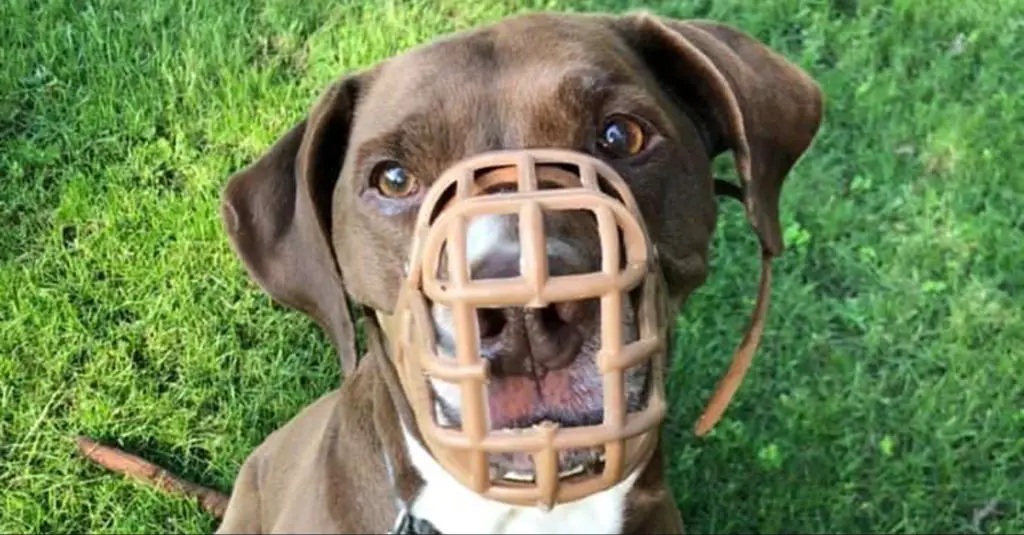Introduce the Issue
Dog bites are a major public health issue. According to the Centers for Disease Control and Prevention, over 4.5 million dog bites occur each year in the United States. Alarmingly, most of these bites do not come from stray or unfamiliar dogs, but from a family’s own pet or a neighbor’s dog. Children are the most common victims of dog bites, with the risk being highest for kids ages 5 to 9 years old. This raises an important question for many dog owners – if your pet bites someone, should you keep the dog or give it up? There are many factors to consider when deciding what to do after a dog bite incident.
Understand Why Dogs Bite
Dogs bite for a variety of reasons. Some of the most common reasons include:
- Fear or anxiety: Dogs may bite out of fear if they feel threatened. This often occurs with rescue dogs who have a history of abuse or neglect.
- Protection: Dogs are protective of their territory and family members. They may bite to defend their resources, space, puppies or owners.
- Pain or sickness: Dogs in pain from an injury or illness may snap or bite if touched in a sensitive area.
- Herding instinct: Breeds like border collies may nip at people’s heels to herd them.
- Play: Mouthing behaviors meant as play can progress to problematic biting.
- Predatory instinct: Some dogs may bite or nip when seeing small animals due to a strong prey drive.
Warning signs a dog may bite include growling, baring teeth, stiffening, staring, snapping, and raising hackles. Biting can often be prevented through proper socialization and training from an early age. Exposing dogs to a variety of people, environments, and stimuli teaches them to calmly handle stressful situations. Obedience training also promotes behavior control.

Assess Bite Severity
When a dog bites, it’s important to assess the severity of the bite to help determine the risk of it happening again. Dog bites can range from minor nips to deep puncture wounds to maulings that cause disfiguring injury or even death. Some key factors to consider when evaluating bite severity:
– Level of damage – Was the bite a minor nip that barely broke skin, a moderate bite with some punctures, or a mauling with deep crushing wounds? The amount of physical damage indicates the dog’s aggression level and ability to cause harm.
– Wound location – Bites to the face, throat, or genital regions are especially concerning as they show the dog was aiming for vulnerable areas. Bites on the extremities may be less risky.
– Number of bites – A single nip may be different than a dog that bites multiple times in an attack. Repeated biting shows a lack of bite inhibition.
– Size of dog – The breed and size of the dog is a factor. Large dogs or those bred for protection can inflict greater injury. Small dogs may be less dangerous.
More severe bites that require stitches or cause disfiguring injury indicate a higher risk of the dog biting again compared to a minor nip. Assessing bite severity provides insight into the threat level the dog poses to people in the future if no steps are taken to manage it.
Consider the Victim
When deciding whether to keep a dog that has bitten, it’s important to consider the victim and the context surrounding the bite. Was the victim a family member or a stranger? Did they provoke the dog in some way, or was the bite unprovoked? The victim’s identity and relationship to the dog can give key insights into what may have triggered the aggressive behavior.
Additionally, consider the age and vulnerability of the victim. Young children and elderly individuals are at higher risk of injury from dog bites. A bite to a vulnerable victim may be more concerning than a minor nip directed at an adult. However, any bite has the potential to be serious and should not be taken lightly.
Examining the specifics around the victim provides important details to determine the level of risk for future aggression. A dog that bites a provocative stranger may be managed differently than one who bites an innocent child. Consider the victim thoughtfully when deciding whether a dog can be safely kept in a home after a bite incident.
Evaluate the Dog’s History
When deciding if a dog that has bitten should be kept, it is important to closely evaluate the dog’s past history and behaviors. This can provide insight into the dog’s overall temperament and risk factors.
Review any past incidents the dog has been involved in. Were there previous nips, bites, or aggression displayed? What were the contexts surrounding those events? For example, was the dog startled, afraid, in pain, guarding resources, or provoked? Understanding why a dog has reacted aggressively in the past helps assess the underlying cause.
Also look at the dog’s typical day-to-day behavior in the home environment when relaxed. Does the dog willingly approach household members for affection? Does he solicit play or interact normally with family? Or does he seem standoffish, fearful, or prone to startling? Observing how the dog behaves in his usual routine can reveal a lot about his baseline temperament.
Additionally, specialized temperament tests performed by trained professionals can be very useful. These experts can safely simulate scenarios to evaluate how the dog responds to potentially stressful situations or provocation. This provides an objective analysis of the dog’s reactions and abilities to recover. Results can determine if rehabilitation or management is possible.
Taking the time to thoroughly evaluate the dog’s history, behaviors, and temperament will provide the information needed to make an informed decision on whether the dog can be safely kept.
Training and Behavior Modification
Working with professional trainers and behaviorists can help modify aggressive behavior in dogs through various techniques. Two common methods are desensitization and counterconditioning.
Desensitization involves gradually exposing the dog to triggers in a controlled, non-threatening manner. For example, if the dog is fearful of strangers, you would start by having a stranger stand far away while the dog remains calm and relaxed. Over multiple training sessions, the stranger would move progressively closer as the dog stays below threshold. This slowly changes the dog’s emotional response to the trigger.
Counterconditioning means teaching the dog to associate the trigger with something positive rather than negative. For the stranger example, you would pair the appearance of a stranger with delicious treats to create a positive association. Over time, the dog learns that strangers predict good things are coming.
These scientifically-based techniques require patience, consistency and expert guidance to be effective. A qualified professional can create a customized behavior modification plan to target your dog’s specific issues in a safe, humane manner.
Safety Measures
If you decide to keep a dog that has bitten, it is absolutely crucial to implement stringent safety measures. This protects people and also prevents your dog from getting into situations where he might bite again.

Muzzle training is essential. Your dog should view his muzzle as something positive, not a punishment. Take the time to condition him to enjoy wearing a muzzle with plenty of treats and praise. A basket muzzle allows him to pant, drink water, and take treats while preventing biting.
Always keep your dog separated from children with baby gates or a crate. Don’t allow children to approach, touch, or play with your dog unsupervised. Make sure your dog has a safe space he can retreat to when needed.
Your backyard should have secure, high fencing to prevent escapes. Gates should remain locked. Post clear “Beware of Dog” signs instructing visitors not to enter your yard or pet your dog.
Implementing strict management, routine structure, and preventative measures is key to keeping everyone safe if deciding to keep a dog with bite history.
Making the Decision
When deciding whether to keep or rehome a dog that has bitten, the most important factors to consider are safety and preventing future incidents. Evaluate the pros and cons objectively.
The benefits of keeping the dog may include not having to give up a beloved family pet or avoiding contributing to overcrowded shelters. However, the risks of keeping an aggressive dog often outweigh sentimental reasons. An unprovoked or serious bite indicates the dog could be dangerous, especially around children, strangers, or other pets. This risk may be too high to manage safely in a home environment.
In severe cases involving multiple unprovoked attacks causing serious injury, euthanasia may need to be considered. As difficult as it is, putting down a dangerous dog is sometimes the only way to ensure no one else gets hurt. Euthanasia should always be a last resort after working with trainers and behaviorists and ruling out rehoming options.
The top priority when deciding what to do with an aggressive dog is preventing any possibility of repeat attacks. Keeping people safe is more important than protecting the dog. If the dog can likely be retrained or managed safely in an experienced home, rehoming may be the best option over euthanasia. However, be sure to disclose the bite history fully so the next owner can make an informed decision.
Rehoming Responsibly
If after careful evaluation you decide that rehoming your dog is the best option, it’s crucial to do so in a responsible manner. Finding a new home for a dog with a history of biting presents challenges, but with proper precautions it can often be done successfully.
First and foremost, be completely transparent with potential new owners about your dog’s bite history. Don’t sugarcoat or downplay the incidents—full disclosure is essential. Provide detailed documentation about the circumstances of each bite, the resulting injuries, any training or behavior modification attempted, and recommendations from your veterinarian or behaviorist.

Thoroughly vet any new owner. Do in-depth screening including home visits, reference checks, and ensuring the potential owner has the knowledge and resources to safely manage your dog. Be sure they fully understand the liability they are taking on and have capacity to provide ongoing training and supervision.
Follow up regularly after rehoming your dog. Check in frequently at first to ensure the transition is going smoothly. Provide guidance and support to the new owner if any issues arise. While you can’t control the situation entirely, follow-up can help ensure your dog’s success in their new home.
Rehoming a dog due to biting is a process that requires care, honesty and diligence. But done properly, it can give some dogs a chance at a fresh start while also keeping people safe.
Takeaways
When deciding whether to keep a dog that has bitten, there are several important considerations. Assess the severity of the bite, the context surrounding the incident, the dog’s history, and options for training and behavior modification. Work with a veterinarian and trainer to determine if the dog can be rehabilitated or if rehoming/euthanasia is a better option. Responsible dog ownership means making tough choices with the dog’s and public’s safety in mind.
Key points to remember:
- Get professional help from a veterinarian and certified trainer/behaviorist.
- Muzzle train dogs with a bite history and monitor interactions closely.
- Spay/neuter dogs with aggression issues.
- Socialize and train dogs consistently using positive reinforcement.
- Educate children on safe behavior around dogs.
For more information on living safely with dogs, consult breed-specific rescues, veterinary behaviorists, and resources like the ASPCA.

